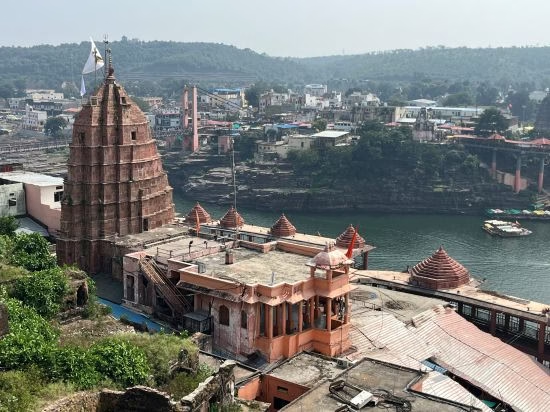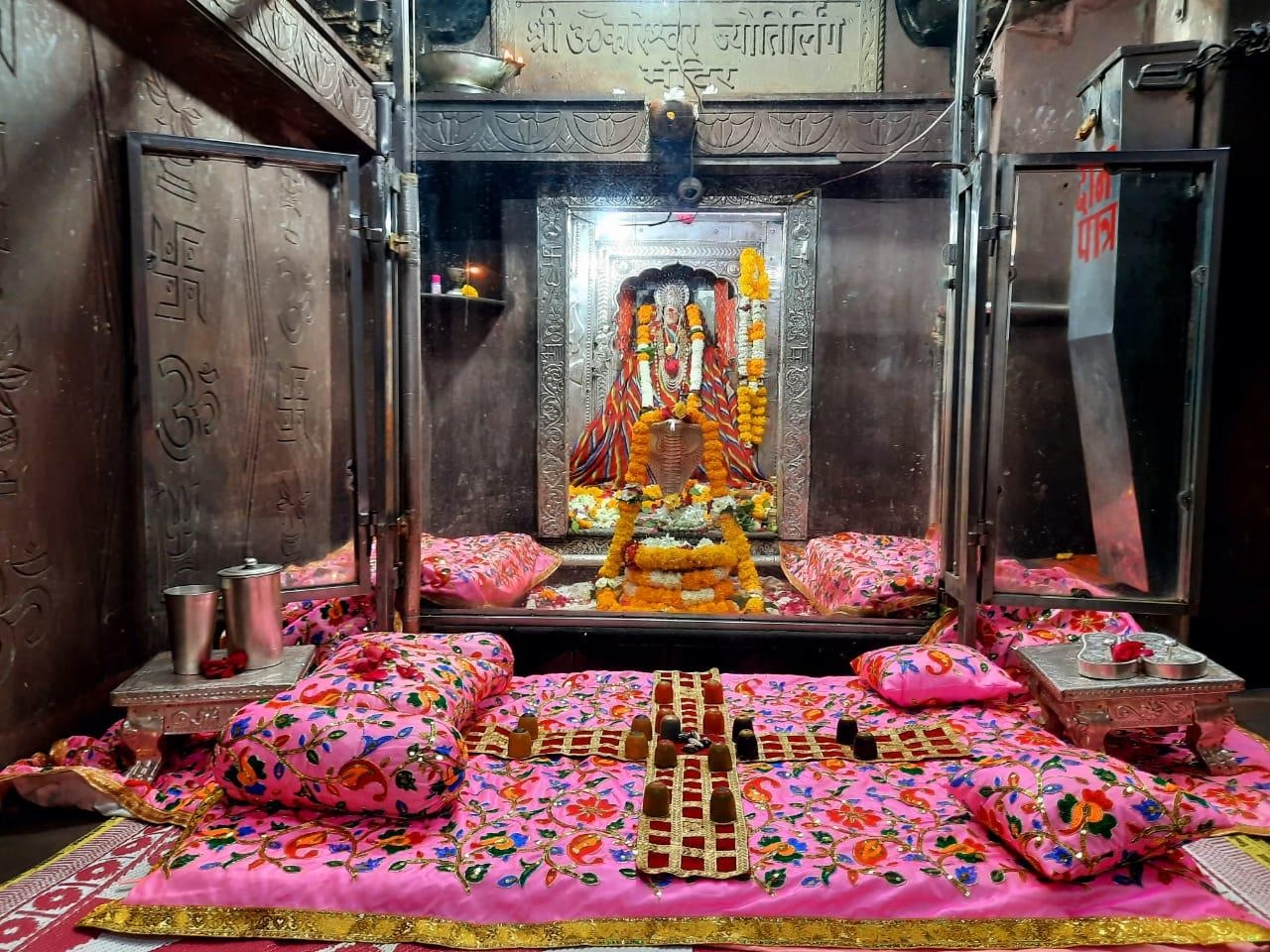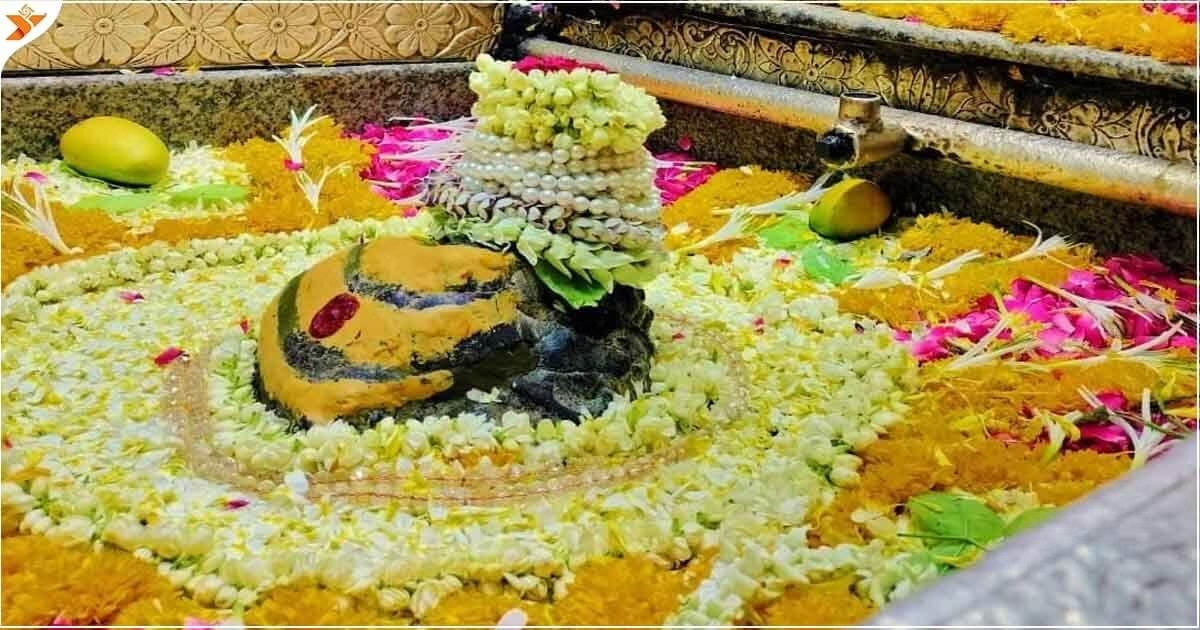Omkareshwar Temple Architecture: A Marvel of Ancient Indian Temple Design
Introduction
The Omkareshwar Temple, located on the island of Omkareshwar in the Narmada River in Madhya Pradesh, India, is not just a spiritual landmark but also a stunning example of ancient Indian temple architecture. Dedicated to Lord Shiva, the Omkareshwar Jyotirlinga temple holds deep religious significance, but its architectural design also makes it a marvel of Indian craftsmanship. In this blog, we explore the intricate features of the temple’s architecture, highlighting the unique elements that make it stand out among other ancient temples in India.
The Influence of Ancient Indian Temple Architecture
The architecture of Omkareshwar Temple draws influence from North Indian temple styles, particularly those developed during the Gupta and post-Gupta periods. The temple follows the Nagara style of temple architecture, which is known for its towering spires (Shikhara), intricately carved pillars, and well-planned sanctum areas. This style is commonly found in many Hindu temples built during the medieval period across northern India.
The Omkareshwar Temple, with its ancient and classical design, embodies the harmonious blend of spiritual symbolism and artistic expression. The structure, materials, and carvings reflect the devotion and craftsmanship of ancient builders, showcasing not only the grandeur of the temple but also its spiritual essence.
Key Features of Omkareshwar Temple Architecture
1. The Shikhara (Spire)
The central feature of Omkareshwar Temple’s architecture is its Shikhara, the towering spire above the sanctum that houses the Omkareshwar Jyotirlinga. The Shikhara is symbolic of Mount Meru, the mythical mountain at the center of the universe in Hindu cosmology.
This spire, made from stone, rises gracefully, symbolizing the connection between the earthly and divine realms. The curvature of the Shikhara signifies the constant flow of divine energy.
2. The Sanctum (Garbhagriha)
At the heart of the Omkareshwar Temple is the Garbhagriha or sanctum, which houses the Omkareshwar Jyotirlinga. This sacred chamber is the most important part of the temple and is where devotees offer prayers and perform rituals.
The sanctum is meticulously designed to create a tranquil atmosphere, enhancing the spiritual experience of visitors. The subtle architecture of the Garbhagriha creates a space for profound reverence and reflection.
3. Mandapa (Pillared Hall)
The Mandapa is the pillared hall located in front of the sanctum. This area is used for worshippers to gather, perform rituals, and listen to aarti (devotional songs). The Mandapa is supported by several intricately carved pillars with reliefs depicting scenes from Hindu mythology.
The design of the Mandapa reflects the architectural styles of medieval Indian temples, with wide, open spaces that promote spiritual congregation and devotion.
4. Intricate Carvings and Sculptures
Omkareshwar Temple is renowned for its intricate carvings and sculptures that adorn the walls and pillars. These carvings depict various gods and goddesses from Hindu mythology, as well as scenes from the Ramayana and Mahabharata. The fine artistry showcases the craftsmanship of ancient sculptors.
The sculptural reliefs not only add aesthetic beauty to the temple but also have symbolic meanings, often representing the divine’s interaction with the human world. These carvings make the Omkareshwar Temple a visual as well as spiritual treasure.
5. The Nandi Mandapa
In many Shiva temples, Nandi, the sacred bull and vehicle of Lord Shiva, is enshrined facing the main sanctum. At Omkareshwar Temple, the Nandi Mandapa houses a large stone Nandi facing the Omkareshwar Jyotirlinga.
The Nandi Mandapa is located near the entrance, and this architectural feature aligns with the traditional design seen in temples dedicated to Lord Shiva. It is believed that the Nandi in front of the temple listens to devotees’ prayers and transmits them to Lord Shiva.
6. The Kunda (Sacred Pool)
Omkareshwar Temple also features a sacred Kunda or pool, which holds religious significance. Pilgrims often take a dip in the Kunda to purify themselves before entering the temple. The Kunda is an integral part of the temple complex and adds to the overall spiritual experience of the site.
The presence of water near the temple emphasizes the connection between the temple and the Narmada River, which is considered holy and is believed to cleanse the soul.
The Temple Complex and Surroundings
The Omkareshwar Temple is not just a single structure but a part of a larger temple complex that includes multiple smaller shrines, each dedicated to different deities such as Lord Vishnu, Lord Ganesha, and Goddess Parvati. These shrines are spread out across the temple complex and are designed with similar architectural features, creating a cohesive and harmonious design.
The location of Omkareshwar Temple, perched on an island in the Narmada River, adds a scenic and tranquil element to the architecture. The temple complex overlooks the river, and the natural beauty of the surroundings enhances the overall spiritual atmosphere. The serene environment of the temple is a testament to the balance of natural and architectural beauty.
Influence on Other Temples
The Omkareshwar Temple’s design has influenced many other temples built in the region, and its architectural features can be seen in temples dedicated to Lord Shiva across India. Its design elements, such as the Shikhara, pillared Mandapa, and intricate carvings, have become typical of temples constructed during the Gupta period and later periods.
Preservation and Restoration
Despite the passage of time, the Omkareshwar Temple has remained remarkably well-preserved, and the government, along with religious organizations, continues to ensure the temple’s restoration and maintenance. The commitment to preserving the temple’s historical and architectural significance is vital to maintaining its place as one of India’s most revered temples.
Conclusion
The architecture of Omkareshwar Temple is a masterpiece that embodies the essence of ancient Indian temple design. With its towering Shikhara, intricately carved pillars, sacred sanctum, and harmonious layout, the temple stands as a symbol of devotion, artistry, and spiritual significance. Visiting the Omkareshwar Temple offers more than just a religious experience; it is an opportunity to witness the grandeur of ancient Indian architecture and to connect with the timeless spiritual traditions of India.
Whether you’re an architecture enthusiast, a history buff, or a spiritual seeker, Omkareshwar Temple’s design and intricate details offer something for everyone, making it a must-visit destination for travelers and devotees alike.
Omkareshwar Temple Architecture: A Marvel of Ancient Design



